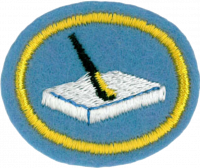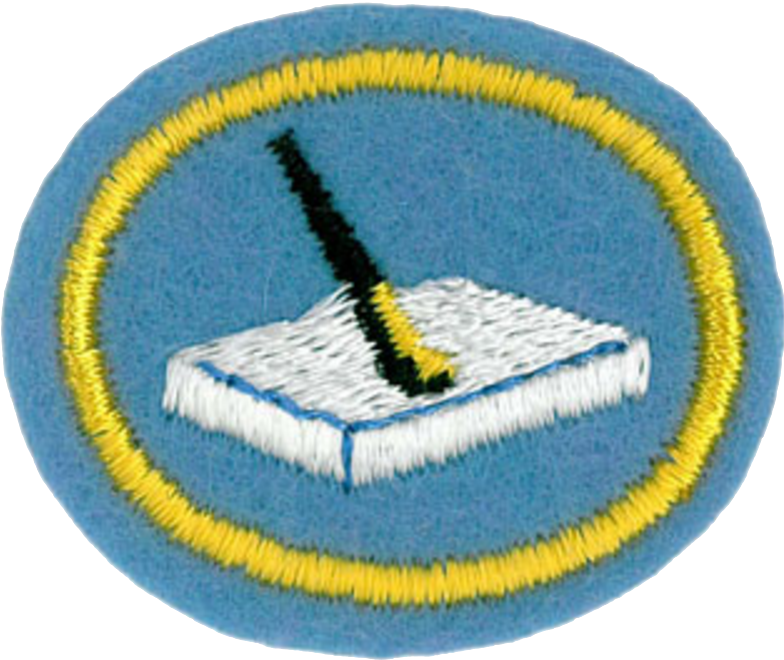Difference between revisions of "AY Honors/Lapidary/Requirements"
Jomegat bot (talk | contribs) m (Jomegat bot moved page AY Honor Lapidary Requirements to AY Honor Lapidary Requirements: Bot: Moved page) |
m (- Category of Honor Requirements) |
||
| (6 intermediate revisions by 2 users not shown) | |||
| Line 1: | Line 1: | ||
| − | + | {{HonorSubpage}} | |
| − | |||
| − | |||
| − | + | <section begin=Body /> | |
| − | |||
| − | <b> | + | <b>1. <section begin=req1 /><noinclude><translate><!--T:1--> |
| − | <section end= | + | </noinclude>Name four safety precautions to be taken when sawing rocks. |
| + | <noinclude></translate></noinclude><section end=req1 /></b> | ||
| − | <b> | + | <b>2. <section begin=req2 /><noinclude><translate><!--T:2--> |
| − | <section end= | + | </noinclude>Name two types of diamond saw lubricating and cooling solutions and their purpose. |
| + | <noinclude></translate></noinclude><section end=req2 /></b> | ||
| − | <b> | + | <b>3. <section begin=req3 /><noinclude><translate><!--T:3--> |
| − | <section end= | + | </noinclude>Explain how a diamond saw cuts rocks, how it gets dull, and how it can be sharpened. |
| + | <noinclude></translate></noinclude><section end=req3 /></b> | ||
| − | <b> | + | <b>4. <section begin=req4 /><noinclude><translate><!--T:4--> |
| − | < | + | </noinclude>Describe the five basic steps to follow in bringing a slab or a flat surface to a polish. |
| + | <noinclude></translate></noinclude><section end=req4 /></b> | ||
| − | <b> | + | <b>5. <section begin=req5 /><noinclude><translate><!--T:5--> |
| − | <section end= | + | </noinclude>What important precaution should be taken between each stage of grinding and sanding? |
| + | <noinclude></translate></noinclude><section end=req5 /></b> | ||
| − | <b> | + | <b>6. <section begin=req6 /><noinclude><translate><!--T:6--> |
| − | <section end= | + | </noinclude>What is a template, and how is it used? |
| + | <noinclude></translate></noinclude><section end=req6 /></b> | ||
| − | <b> | + | <b>7. <section begin=req7 /><noinclude><translate><!--T:7--> |
| − | <section end= | + | </noinclude>What is a cabochon, and what is the usual thickness of the slab from which it is made? |
| + | <noinclude></translate></noinclude><section end=req7 /></b> | ||
| − | <b> | + | <b>8. <section begin=req8 /><noinclude><translate><!--T:8--> |
| − | <section end= | + | </noinclude>How do you decide the best angle or position to slab a specimen? |
| + | <noinclude></translate></noinclude><section end=req8 /></b> | ||
| − | <b> | + | <b>9. <section begin=req9 /><noinclude><translate><!--T:9--> |
| − | <section end= | + | </noinclude>Explain two methods of wet sanding while shaping and polishing the rock. |
| + | <noinclude></translate></noinclude><section end=req9 /></b> | ||
| − | <b> | + | <b>10. <section begin=req10 /><noinclude><translate><!--T:10--> |
| − | <section end= | + | </noinclude>From what material are polishing compounds made? If a scratch appears while polishing, how is it removed? |
| + | <noinclude></translate></noinclude><section end=req10 /></b> | ||
| − | <b> | + | <section begin=challenge /> |
| − | <section end= | + | <b>11. <section begin=req11 /><noinclude><translate><!--T:11--> |
| + | </noinclude>Saw, trim, properly dop, and carry a cabochon through the necessary grinding, sanding, and polishing stages to a high gloss or glassy finish. | ||
| + | <noinclude></translate></noinclude><section end=req11 /></b> | ||
| + | <section end=challenge /> | ||
| − | + | <b>12. <section begin=req12 /><noinclude><translate><!--T:12--> | |
| − | + | </noinclude>Mount the cabochon on some type of backing, such as a stick pin, sweater pin, key ring, etc., with cement. | |
| + | <noinclude></translate></noinclude><section end=req12 /></b> | ||
| + | <section end=Body /> | ||
Latest revision as of 17:52, 21 July 2022
1. Name four safety precautions to be taken when sawing rocks.
2. Name two types of diamond saw lubricating and cooling solutions and their purpose.
3. Explain how a diamond saw cuts rocks, how it gets dull, and how it can be sharpened.
4. Describe the five basic steps to follow in bringing a slab or a flat surface to a polish.
5. What important precaution should be taken between each stage of grinding and sanding?
6. What is a template, and how is it used?
7. What is a cabochon, and what is the usual thickness of the slab from which it is made?
8. How do you decide the best angle or position to slab a specimen?
9. Explain two methods of wet sanding while shaping and polishing the rock.
10. From what material are polishing compounds made? If a scratch appears while polishing, how is it removed?
11. Saw, trim, properly dop, and carry a cabochon through the necessary grinding, sanding, and polishing stages to a high gloss or glassy finish.
12. Mount the cabochon on some type of backing, such as a stick pin, sweater pin, key ring, etc., with cement.


